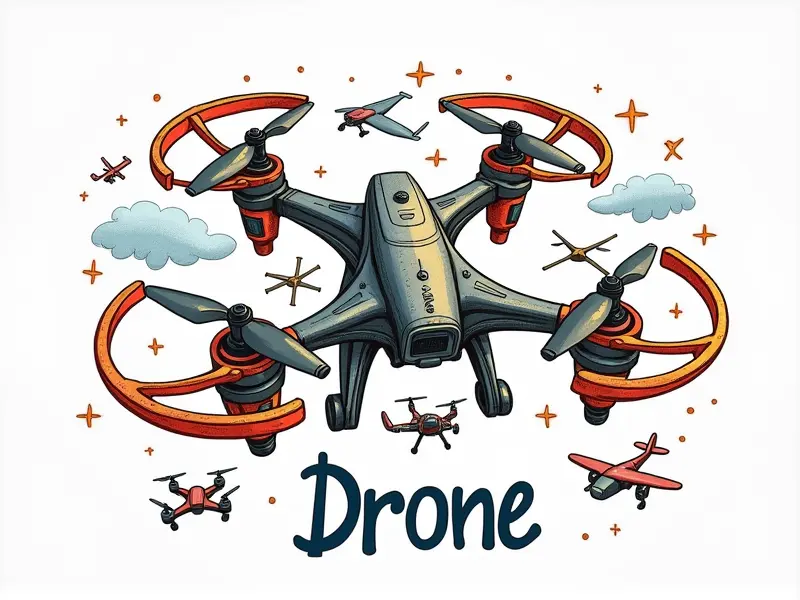What is geofencing in drones?

Why Geofencing Is Essential for FPV Racing Drones
FPV (First Person View) racing drones are high-speed, agile aircraft used in competitive events. These drones can reach incredible speeds and cover vast distances quickly. However, the thrill of speed comes with significant risks, including potential collisions with obstacles or unauthorized areas. Geofencing plays a crucial role in ensuring that FPV racing drones operate safely within designated boundaries.
Geofencing technology creates virtual barriers around restricted or sensitive locations such as airports, military bases, and national parks. This ensures that drones do not enter these no-fly zones, preventing accidents and legal issues. Additionally, geofencing helps maintain the integrity of competitive events by keeping racers within designated race courses.
How Geofencing Keeps Drones Safe and Legal
The primary function of geofencing is to safeguard both drones and people on the ground. By setting up virtual boundaries around restricted areas, geofencing prevents unauthorized drone flights that could lead to accidents or privacy violations. This technology also ensures compliance with federal aviation regulations, which mandate certain restrictions for drone operations.
For example, in the United States, the Federal Aviation Administration (FAA) requires drones to be flown below 400 feet and at least five miles away from airports without prior approval. Geofencing helps drone operators adhere to these rules automatically, reducing the risk of fines or legal complications.
Understanding Drone Geofencing Basics
Geofencing involves creating virtual boundaries around specific geographic areas using GPS coordinates. These boundaries are programmed into a drone's flight control system, which then restricts the drone’s movement based on predefined rules. For instance, if a drone approaches a restricted area, it may automatically pause or return to its starting point.
Geofencing can be implemented in various ways depending on the type of drone and intended use. Some drones come with built-in geofencing capabilities, while others require third-party apps or software updates to enable this feature.
The Role of Geofencing in Drone Regulations
Different countries have varying regulations governing drone operations. In many cases, these rules include restrictions on where and how drones can be flown. Geofencing is a critical tool for compliance with such regulations because it helps prevent unauthorized flights over sensitive areas.
The European Union's General Data Protection Regulation (GDPR) also impacts geofencing by requiring that drone operators respect privacy laws when flying near residential or commercial properties. Geofencing can help enforce these rules, ensuring that drones do not capture images or data from private spaces without consent.
Exploring Geofencing: A Drone Navigation Tool
Beyond safety and legal compliance, geofencing serves as an essential navigation tool for drone pilots. By setting up virtual boundaries, pilots can define safe flight zones that match their intended use case. For instance, a photographer might set up a geofence around a scenic location to ensure they capture images from approved angles.
Geofencing also enhances situational awareness by providing real-time alerts when the drone approaches restricted areas. This feature is particularly useful for commercial drone operators who need to adhere to strict operational guidelines.
Benefits of Geofencing for Drone Users
- Safety: Prevents accidental collisions with obstacles or people on the ground.
- Compliance: Ensures adherence to local and national regulations, reducing legal risks.
- Privacy: Respects personal privacy by avoiding flights over private properties without consent.
- Efficiency: Streamlines operations by automating flight restrictions based on predefined rules.
Setting Up Geofencing for Your Drone
To set up geofencing, you first need to identify the areas where your drone will be flown and determine any regulatory or operational constraints. Next, use a mapping tool like Google Maps to mark these boundaries and obtain their GPS coordinates.
Once you have the coordinates, input them into your drone’s flight control system or download a geofencing app that supports your device. Many modern drones come with built-in geofencing features, but it's always good practice to verify this functionality before flying.
How Geofencing Protects Sensitive Areas from Drones
Sensitive areas such as military installations, wildlife sanctuaries, and nuclear power plants require strict security measures. Unauthorized drone flights over these sites can compromise safety and operational integrity.
Geofencing provides a robust solution by creating virtual barriers around these locations. When a drone approaches one of these restricted zones, it triggers an alert or automatically returns to its starting point, preventing any potential breaches.
Top Geofencing Apps for Drones
- Beyond Visual Line Of Sight (BVLOS): This app allows drone operators to set up geofences around specific areas and monitor flights in real-time.
- DJI GS RTK: Offers advanced geofencing capabilities for surveying and mapping applications, ensuring compliance with regulatory requirements.
- AirMap: Provides comprehensive airspace information and geofencing tools to help operators stay compliant with local regulations.
Geofencing 101 for RC Quadcopter Pilots
RC quadcopters, often used in hobbyist settings, can also benefit from geofencing technology. By setting up virtual boundaries around your flying field or backyard, you ensure that the drone remains within safe confines and does not stray into unauthorized areas.
Many modern RC quadcopters come with built-in geofencing features, but it's important to familiarize yourself with these settings to maximize their effectiveness. Additionally, using a dedicated app can provide more advanced options for customizing your flight zones.
The Impact of Geofencing on Drone Operations
Geofencing has had a profound impact on the way drones are operated and regulated globally. It not only enhances safety but also facilitates compliance with complex legal frameworks governing drone usage. As technology advances, geofencing will continue to evolve, offering even more sophisticated features for both recreational and commercial users.

